I was in the stern of the boat re-making some of the earthing cables, these are heavy wires joining all the metal parts of the boat together. This is done for several reasons, the main one being to stop galvanic corrosion, but it also helps in the case of lightning strikes, and could help reduce interference to the HF SSB radio. None of these reasons really make sense to me when investigated properly. And in the case of corrosion, it is possible they could make things worse. however, I’m in a minority here, so I connected all the wires together, the wires themselves seem to corrode and become detached very quickly. It’s a rubbish job, I have to contort my body to fit in, more skin lost to the boat. Anyway, I was using my multimeter to check the continuity of the earth wires and I pressed it against the eye bolt that holds the steering cable to the rudder quadrant. I have put a picture of the said eye bolt below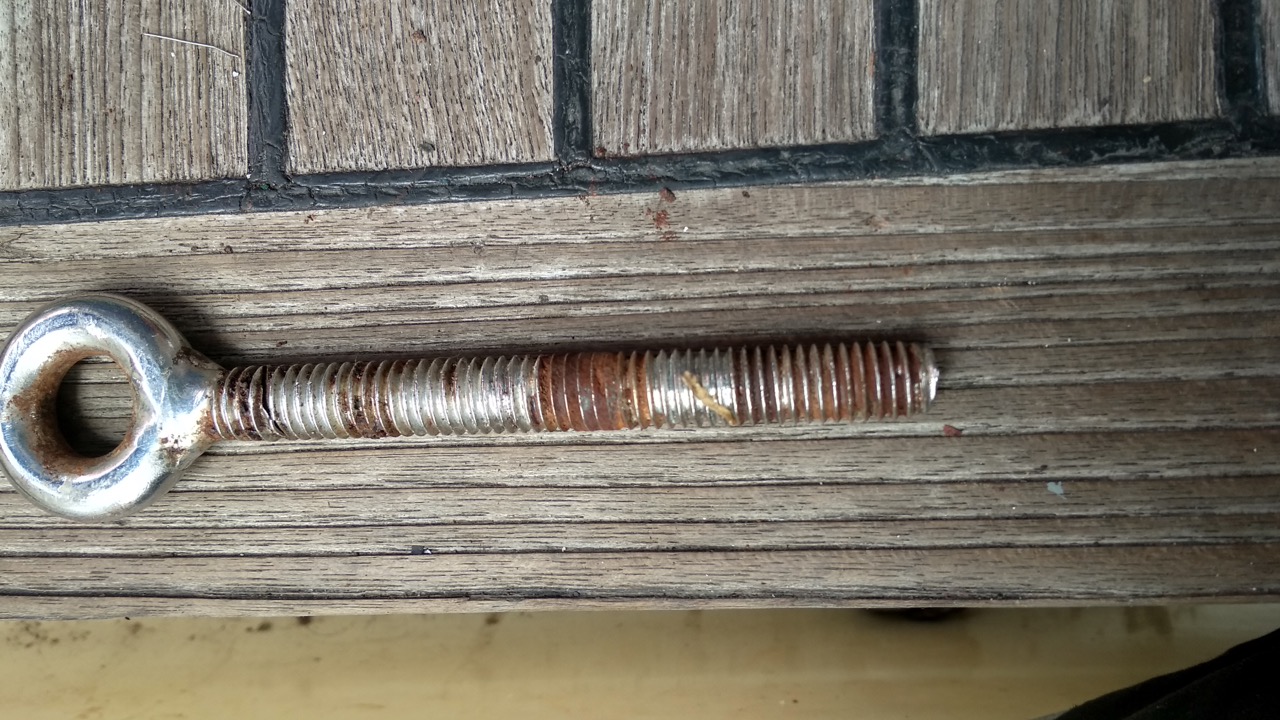
I was just a little surprised when the bolt snapped in half with just the slightest push from me, 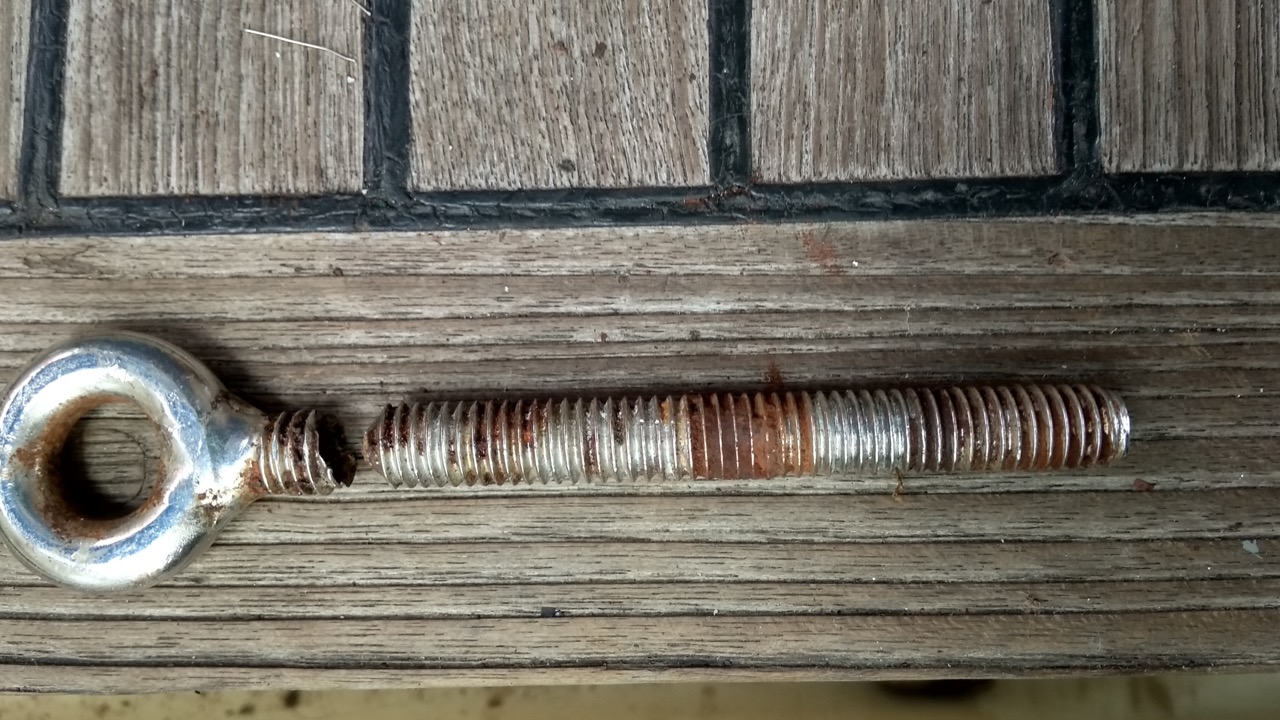 Obviously I had either acquired ‘super powers’ like spiderman, or I had been steering this boat around with the steering ready to fail at any moment because of a condition known as crevice corrosion.
Obviously I had either acquired ‘super powers’ like spiderman, or I had been steering this boat around with the steering ready to fail at any moment because of a condition known as crevice corrosion.
It turned out to be the latter. There are two eye bolts connecting the steering, and if either fails you lose steering, I had already checked the one closest to me and it was like new, so I had assumed, never assume, that the other one, which is hard to see, would be the same, but for some reason water was getting to the other one and it, and the wire and clamps were in a bad way.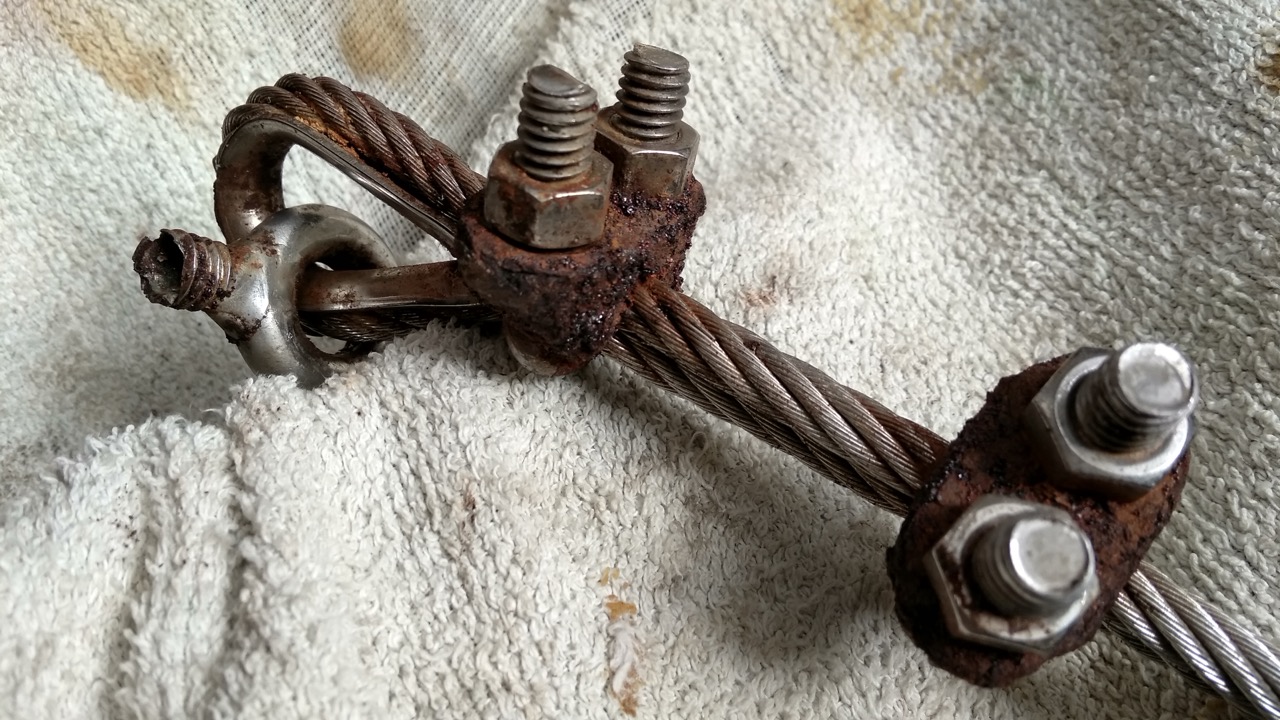
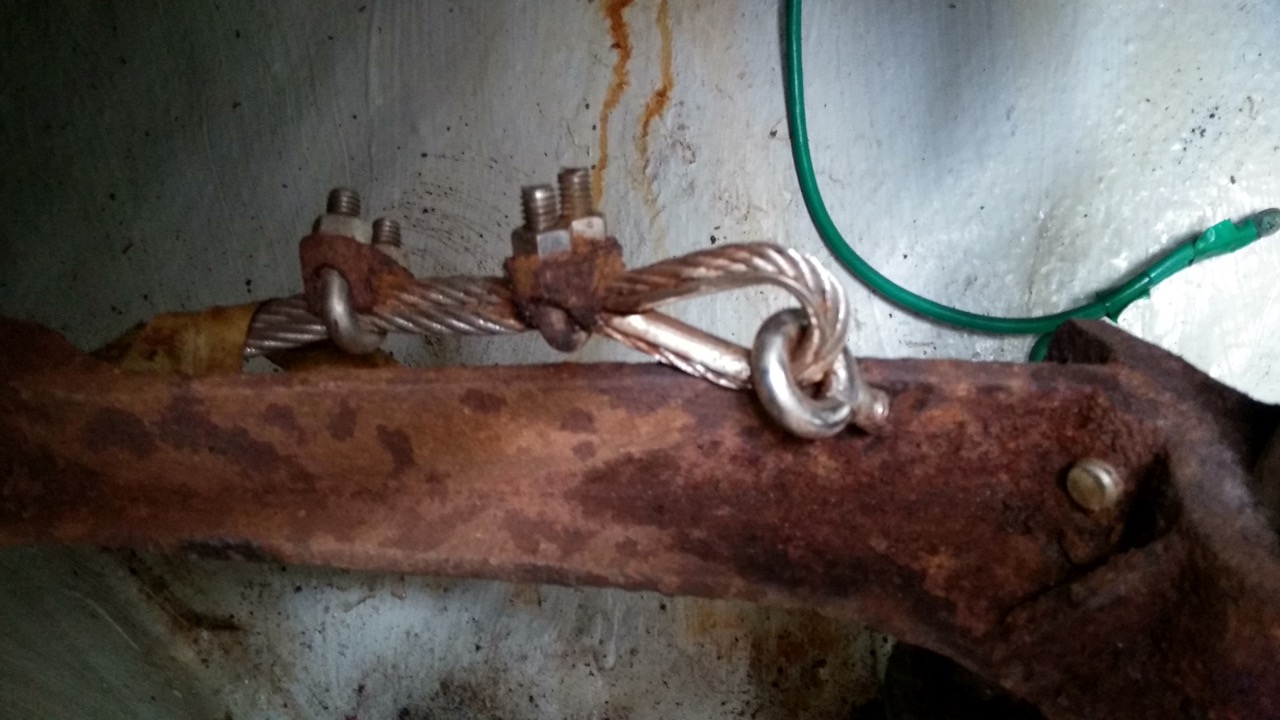
It’s all tickety-boo now, but I was a bit freaked out that I had actually missed this, and it would have been a pain to fix at sea, but worse could have caused a collision when manoeuvring in the marina. I have now spent so much time in the stern of the boat I am confident I have checked everything and feel quite good about it all. Ah just remembered I need to grease a bearing, Damm.
While I was down there I had noticed two shiny Racor fuel filters connected in series, I had seen them before but hadn’t given them much thought, I assumed they were connected to the cabin heater, but now I have serviced that I know they are not and the thought that they may actually be in use on the engine bothered me, as I had never changed them. So I followed the hoses back from the filters, to under the engine, across to the other side of the boat, along the side of the engine, then to a dead end!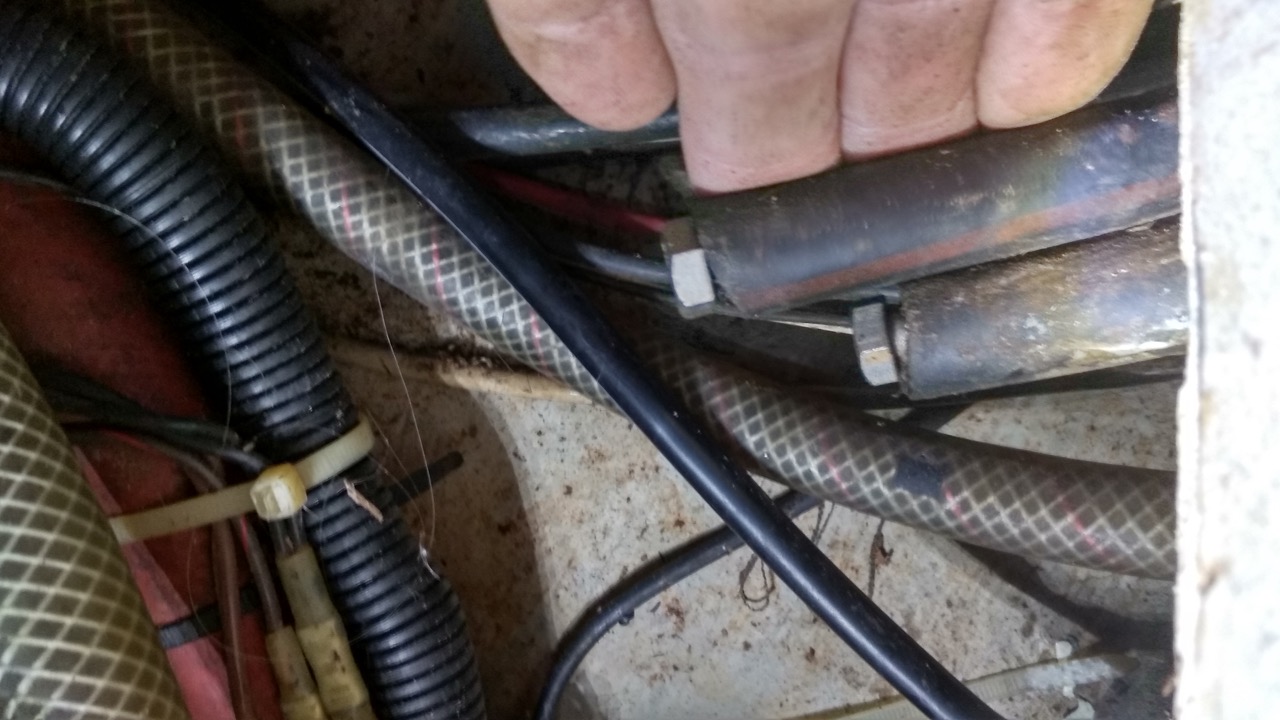 Here they had been terminated with some bolts being screwed into the pipes. I may well resurrect them and use them to create a fuel polishing system. Anyone who thinks I have gone mad to want to polish my fuel needs to do a bit of research, polished fuel is the best!
Here they had been terminated with some bolts being screwed into the pipes. I may well resurrect them and use them to create a fuel polishing system. Anyone who thinks I have gone mad to want to polish my fuel needs to do a bit of research, polished fuel is the best!
I moved onto the leaks next, there’s just a few small leaks, and they never bother us here, despite torrential rain at times, because everything dries so quickly, but I’m not that long out of the Irish sea to remember how cold the northern latitudes can be, and how damp stuff is really horrible, how you dream of getting to port for a chance to dry stuff out. So I’m working on these. The annoying one is the hatch above the table, this just drips a little from the hatches wooden frame, I had assumed this would be a pain to trace, so I removed the headlining (ceiling) around it, no trivial task in itself.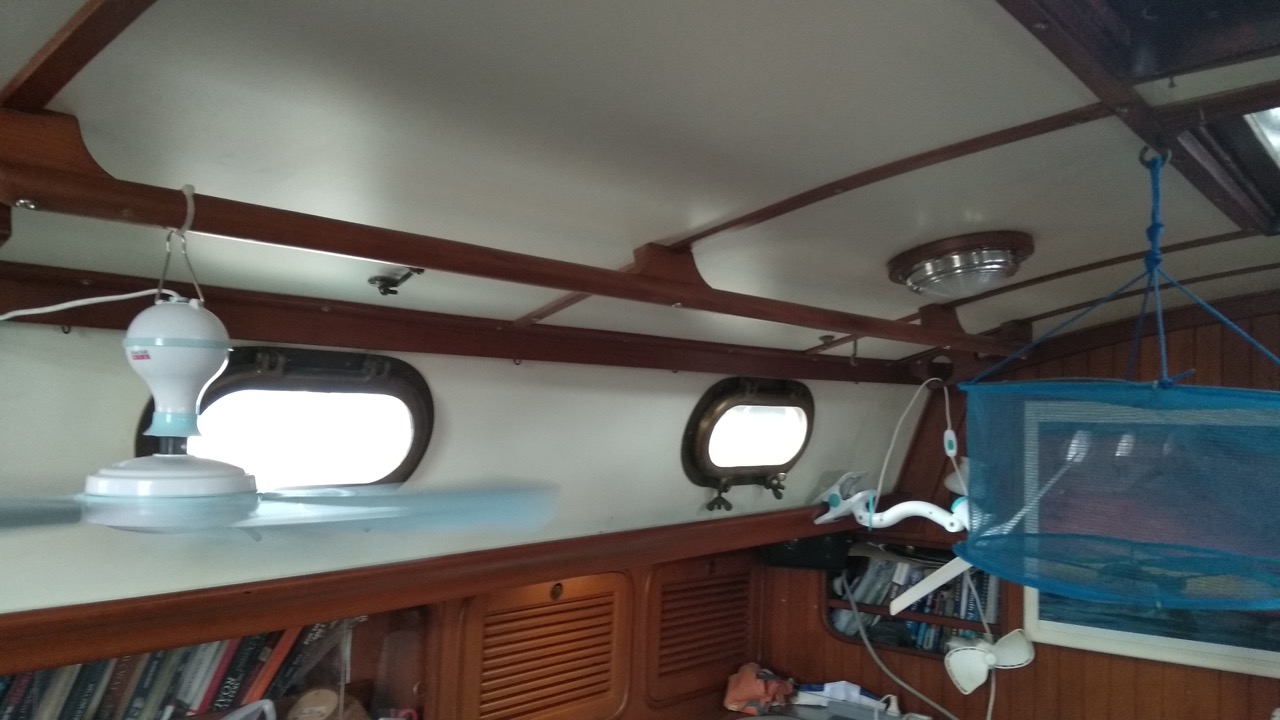
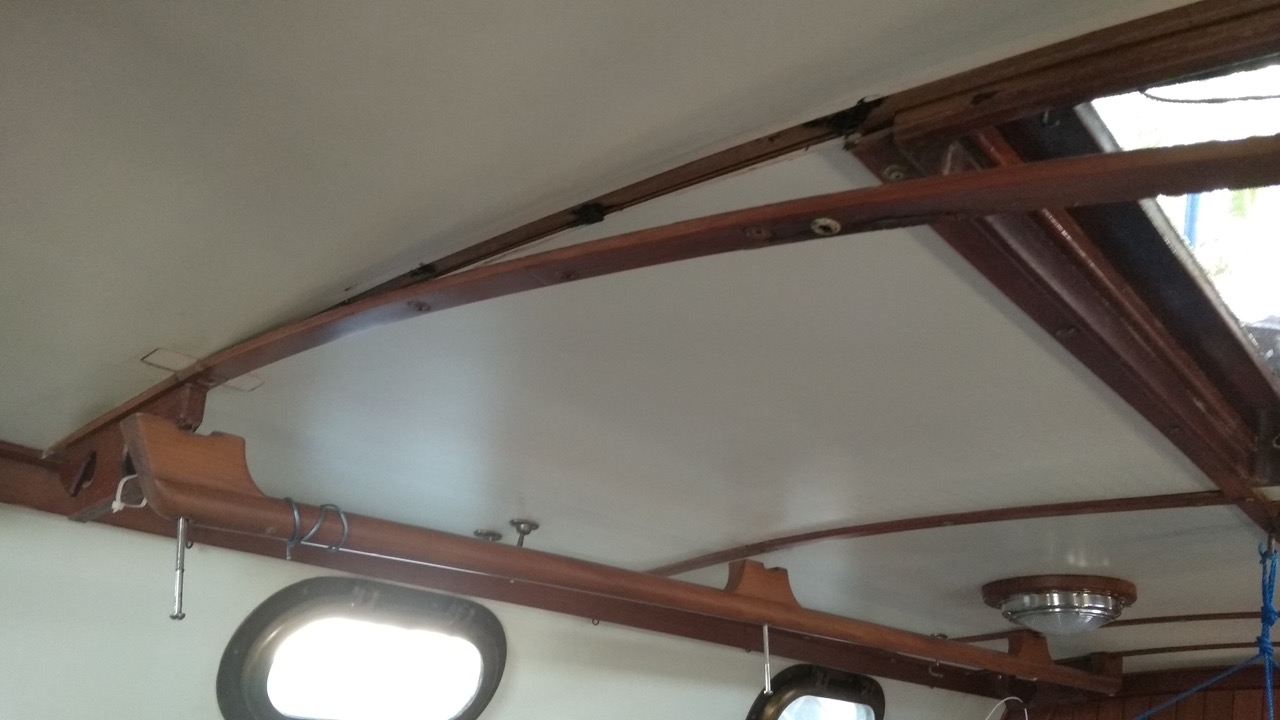
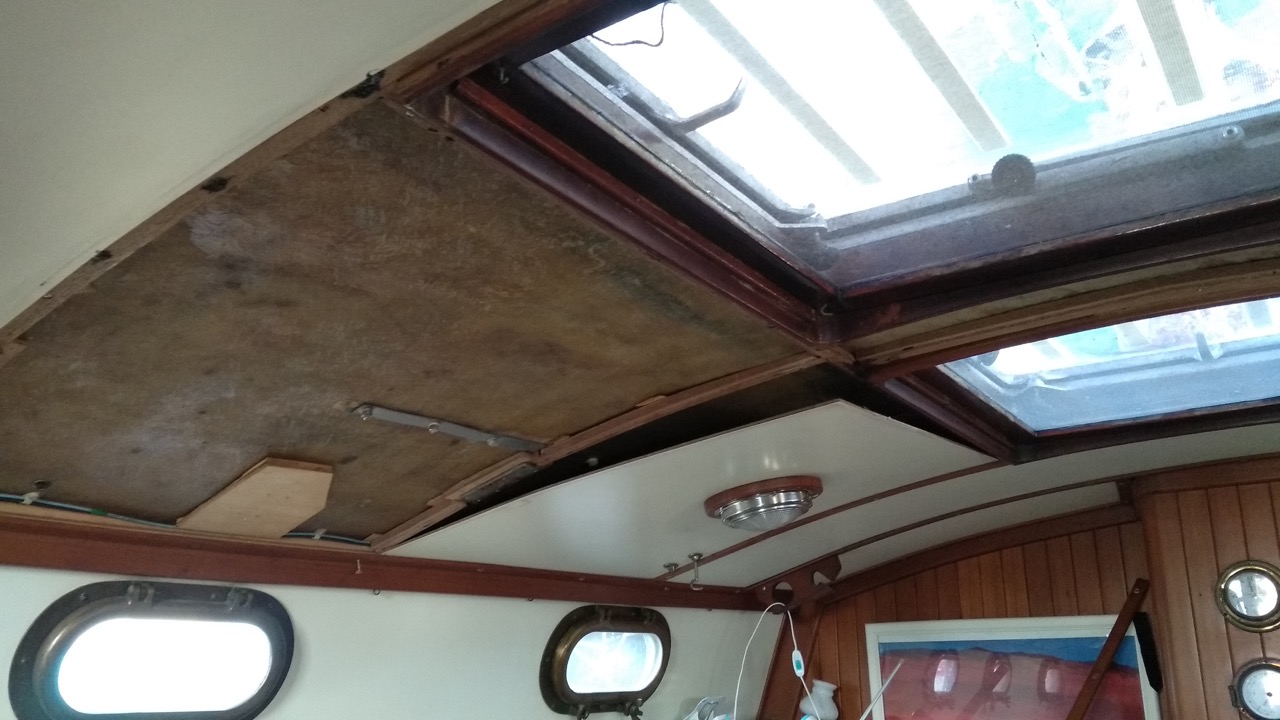 This revealed a very dry area, and no sign of any water, despite the hose above covering the area with lots of water. The water was coming through the wood, directly. Looking above I could see the caulking in the wood had failed, so that’s a relatively trivial job to fix. I hadn’t needed to dismantle the headlining, but it was reassuring to see it all dry inside anyway.
This revealed a very dry area, and no sign of any water, despite the hose above covering the area with lots of water. The water was coming through the wood, directly. Looking above I could see the caulking in the wood had failed, so that’s a relatively trivial job to fix. I hadn’t needed to dismantle the headlining, but it was reassuring to see it all dry inside anyway.
The next job was the chainplates, some of which had been weeping a little creating a slightly damp space in the lockers below them. I’m not removing them and rebedding, they don’t need that, but just resealing them where they pass through the deck with fresh sikaflex sealant. This should sort the problem for a good few years.
In my mind there is a mythical place were I will do all of these jobs properly, when I get there, wherever I happen to be at the time of realising a job needs doing is never appropriate for many reasons. The place I am waiting to get to, is a bit like North America, where supplies of high quality parts are plentiful, but it’s also like Thailand, were skilled craftsmen are everywhere and very inexpensive. It’s very hot so the boat is always dry to work on, yet also quite cool so you get get the varnish and paint jobs done without rushing. It will also have a great boatyard, with lovely facilities, perhaps even a pool, but will also be so cheap you won’t feel pressurised to get the work over quickly. I will let you know when I find this place 🙂
For now I have the problem that I don’t think you can buy the sealants I need for the caulking of the chainplates in Borneo, I did see some in a shop, but it was a silly price and had gone off. So I had a couple of small tubes shipped in from the USA, reading the label it says to use within 24 hours of opening, which is crazy, I am keeping them in the fridge to try to lengthen the time they are usable, but tomorrow morning I will be up with the sun, to try and get as many chainplates done as possible in one day.
Chinese new year continues..
These guys have been doing the rounds for a few days, might get them to visit the boat, checkout the budding Michael Jackson.

“The lion’s dance is primarily performed at the beginning of the Lunar Year to drive negative and evil spirits away from the household. The dance of the lion along with the din of firecrackers, clashing cymbals, and gong and drums that accompany it is believed to scare the monsters, ghosts, evil spirits away. Lion dances take place during the first few days of the Chinese New Year and are performed by two people manning a special lion dance costume, one at the head of the lion, another at the tail and body of the lion. The head of the lion and its movement of the eyelids are known to bring vitality and longevity, while the tail of the lion sweeps away bad fortune and unpleasant things from last year.”
“A mirror is attached to the head of the lion which is known to dispel negative energy. Most of the shops and the houses are visited by the lion dance performers which is believed to expel all the bad luck and usher in good fortune.”
Paul Collister

Doing much the same, stopping the leaks, as on a steel boat there is lots of consequences if not. Have fallen victim again to the next wonder product, International Everdure it promises to seal the wood which is awfully important on my hatches and other timber in contact with the hull.
Bit strange that crevice corrosion, Gal will stop that especially if it has side ways loading, but I’d give SS another go and carry a spare. Good thing you are in a area where there are lots of midgets.
Thinking about it you are right, why would it have crevice corrosion if its exposed to the air?
Let me know how you get on with the Everdure, I used thinned epoxy for that, but only indoors. Are you using it as a varnish.
Using it as full Saturation ie 4 lean coats applied wet on wet (diminishing thinner). Didn’t need a good finish but was assured if I wanted to do that it would hold up better than varnish. But just caught up with a guy who I regard as a guru and he says I have to cover it with a good varnish (or paint). Its a problem isn’t it, contradictory advise.
Think I can tolerate blemishes but I definetly want the non water absorbtion quality as it will be contacting painted steel.
Was hopeing to use it on cap rails as my 3 coats of Marine Gloss varnish on Sikkens cetol (2 coats) was not so great, its already lifting in places. Not sure what went wrong there.
Well I used thinned epoxy on plywood to saturate the end grains, when used as bulkheads that are going to be tabbed in. But epoxy can’t take UV unlike polyester resins, I wonder if your product is epoxy based.
I never cared much for sikkens myself, I only use Epifanes, and build it up from 50% thinner, 30%, 10% then 3 or 4 coats full on. I need to add a new coat every couple of months in these latitudes. I also found the epifanes thinner to be really good, but I could be conning myself here based on bad experiences with other thinners, which might not have been the problem.